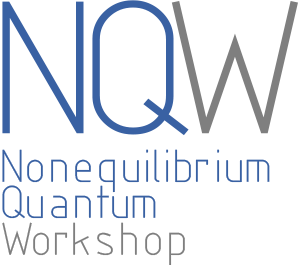Latest Past Events
Jože Gašperlin: The interplay of lattice dynamics, stacking effects and Mott physics in charge-density-wave systems
The transition metal dichalcogenide 1T-TaS2 is a layered compound that exhibits a series of increasingly commensurate charge density wave phases with decreasing temperature, including a low-temperature insulating phase. For a single 1T-TaS2 layer, with an odd number of electrons per Star-of-David cluster, the insulating behaviour may be attributed to Mott localisation. However, the stacking arrangement of multiple layers can lead to doubling of the unit cell, where the nature of the insulating state is ambiguous. Furthermore, the various possible stacking terminations lead to surface states with non-trivial interplay between band-insulating and Mott-insulating behaviour.
Iris Ulčakar: Iterative construction of conserved quantities in dissipative nearly integrable systems
Integrable systems offer rare examples of solvable many-body problems in the quantum world. Due to the fine-tuned structure, their realization in nature and experiment is never completely accurate, therefore effects of integrability are observed only transiently. One way to surpass that is to couple nearly integrable systems to baths and driving: these will stabilize integrable effects up to arbitrary time, as encoded in the time dependent, and eventually, the stationary state of form of a generalized Gibbs ensemble. However, the description of such driven dissipative nearly integrable models is challenging and no exact analytical methods have been proposed so far. Here we develop an iterative scheme in which integrability breaking perturbations (baths) determine the most necessary conserved quantities to be added into a truncated generalized Gibbs ensemble description. Our scheme significantly reduces the complexity of the problem, paving the way for thermodynamic results.


